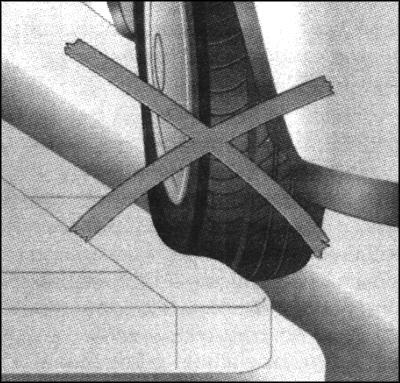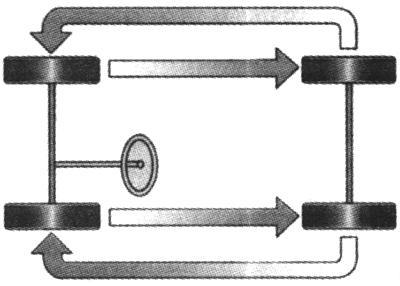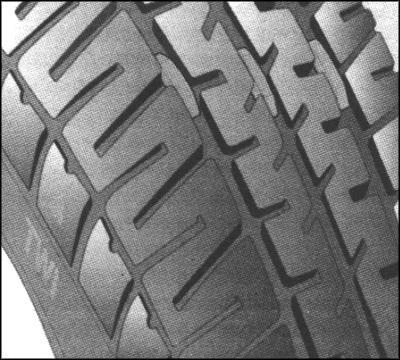
1 minute read
1.31 Condition of tires, rims
Special key
When the pressure is above or below the specified values decreased security deteriorating driving performance, comfort and fuel consumption, as well as increased tire wear. Excessively low blood pressure can lead to heat tires, internal injuries and due to this at high speeds - to the running surface of the peeling tires and even to their rupture. Hidden damage to the tires can not be eliminated subsequent adjustment of air pressure.
Curbs moving at low speed and if possible a right angle. Hit a sharp curbs can lead to hidden damage to tires and rims, which manifest themselves later in the form of leaks, which lead to the fall of the set pressure (Fig. 2.241). Regularly check the tires for damage (punctures, cuts, cracks and dents on the sides). Verify that no damage to the wheels. If any damage or excessive wear should apply to service stations.
Fig. 1.241. Example irregular Park-ing Vehicle
NOTICE Damage may lead to time-ryvu tires. Height tread
Regularly check the height of the tread pattern. If the wear in the front than the rear, swap the rear and front wheels. Wheels with the best protector should be installed in the front (Fig. 1.242).

Fig. 1.242. Scheme reset wheels
Adjust tire pressure. To ensure safety, tires should be replaced at a height of 2-3 mm Tread (winter tires - 4 mm). Minimum permissible height of the tread pattern (1.6 mm) is achieved when the tread wears out before the wear indicator (TWI). Several signs of wear are shown at the same distance from each other in the pits running surface. Their situation was also pointers to the side of the tire (Figure 1.243).
General recommendations on tire
At low altitude tread greatly increases the risk of aquaplaning.











